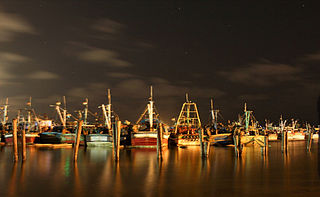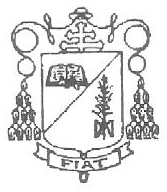
Mylapore, or Thirumayilai, is a neighbourhood in the central part of the city of Chennai, India. It is one of the oldest residential parts of the city. The locality is claimed to be the birthplace of the celebrated Tamil philosopher Valluvar, and the Hindu saint and philosopher, Peyalvar.

Royapuram is a locality in the northern part of the city of Chennai, Tamil Nadu, India. It is best known for its beach, and for Royapuram Railway Station. The station is the first railway station of South India, opening in 1856, and is today the oldest surviving railway station of the Indian subcontinent.

Santhome is a locality in Mylapore in Chennai city in India.
Vannarapettai (transl. Washermenpet) is a northern neighbourhood of Chennai, India. It is also known as Pazhaya Vannarapettai, sometimes shortened as Vannai. It is located north of Parrys Corner and adjacent to Royapuram. Washermanpet is famous for its jewelry shops and matchbox industries, many of which are centered on two main arterial roads.

George Town is a neighbourhood in Chennai, Tamil Nadu, India. It is near the Fort Saint George, Chennai. It is also known as Muthialpet and Parry's corner. It is an historical area of Chennai city from where its expansion began in the 1640s. It extends from the Bay of Bengal in the east to Park town on the west. The Fort St. George is on the south, to Royapuram in the north. The Fort St. George houses the Tamil Nadu Legislative Assembly and the Secretariat. The High court of Tamil Nadu at Chennai, Dr. Ambedkar Law College, Stanley Medical College and Hospital are located here.

The Roman Catholic Archdiocese of Madras and Mylapore/Madras and Myliapor is an archdiocese based in the city of Madras, in India. It took also the name of the ancient diocese of Mylapore, now a part of Chennai.

Church of Our Lady of Light is a Catholic shrine in Chennai, India. The locals commonly call it Luz Church, which derives from the Portuguese name Nossa Senhora da Luz. Built in 1516 by the Portuguese, it is one of the oldest Churches in the city and its foundation stone marks as one of the oldest European monuments in India. The history of the church dates back to the 16th-century legend of safe arrival to land by missionaries. The church is located very near to the Santhome Basilica, where Apostle Thomas is believed to be buried.

Archbishop Savarinathan Michael Augustine was an Indian prelate of the Roman Catholic Church. He served as the sixth Archbishop of the Roman Catholic Archdiocese of Pondicherry and Cuddalore from 1992 to 2004. He is an honorary member of Society of Foreign Missions of Paris. He served the church for 39 years as a bishop and for 56 years as a priest. He died on 4 November 2017 at the age of 84.

Christianity in the state of Tamil Nadu, India is the second largest religion in the state. According to tradition, St. Thomas, one of the twelve apostles, landed in Malabar Coast in AD 52. In the colonial age many Portuguese, Dutch, British and Italian Christians came to Tamil Nadu. Priests accompanied them not only to minister the colonisers but also to spread the Christian faith among the non-Christians in Tamil Nadu. Currently, Christians are a minority community comprising 6% of the total population. Christians are mainly concentrated in the southern districts of Tamil Nadu - Kanyakumari, Thoothukudi and Tirunelveli.

St.Theresa Church is a Catholic church under the jurisdiction of the Archdiocese of Madras-Mylapore (Chennai-Mylai) in Tamil Nadu, India, in Sembiam division of Perambur, Chennai. Approximately 900 families have the membership in this Catholic parish. Many people from various parts of Chennai make pilgrimage to this church for the devotion of Infant Jesus.

The Our Lady of Lourdes Church is located in the city of Tiruchirapalli in the state of Tamil Nadu, India. Built in the Gallo-Catholic design, the Church is devoted to Our Lady of Lourdes. The church is considered one of oldest of the 22 churches in the city which are older than 100 years. The church is located in the premises of St. Joseph's College Higher Secondary School, Trichy. The church is one of the major landmarks in the city.

Royapuram railway station is a railway station at Royapuram, on the Chennai Beach–Walajapet section of the Chennai Suburban Railway network in Chennai, India. It is the second oldest railway station currently operational in India after Howrah railway station situated in Howrah, West Bengal and the first railway station of South India. The first train of South India started operating in June 1856 from Royapuram railway station. The station also remained the headquarters of the Madras and Southern Mahratta Railway till 1922, when the headquarters was shifted to Egmore. Since the original structures of Bombay and Thane stations no longer exist, Royapuram station remains the oldest railway station in the entire subcontinent.

The Ekambareswarar–Kamakshi Temple, commonly known as the Thiruvalluvar Temple, is a Hindu temple dedicated to the poet-saint Valluvar in the neighborhood of Mylapore in Chennai, India. The shrine is located within the Ekambareswarar temple complex. Believed to have been constructed in the early 16th century, the temple was extensively renovated in the 1970s. Traditionally believed to be the birthplace of Saint Valluvar, the temple is the oldest ever built to Valluvar. The temple also serves as the venue for meetings of Tamil language enthusiasts. While many consider the temple as the birthplace of Valluvar, some consider it as his samadhi.
Chennai, along with Mumbai, Delhi and Kolkata, is one of the few Indian cities that are home to a diverse population of ethno-religious communities. According to the 2011 census Chennai then had a total population of 4,681,087 at a density of 26,902 per square kilometre; the sex ratio was 986 and literacy rate was 90.33%. The most widely spoken languages are Tamil and English. Hinduism is followed by a majority of the populace followed by Islam and Christianity. Sikhism, Jainism, Buddhism and Zoroastrianism are other religions practiced.

Peravallur is a developed residential area, located on the north - western corner of Madras, a metropolitan city in Tamil Nadu state, India. Out of 1018 places to be renamed by the government of Tamil Nadu, Peravallur is the one to be renamed as "Peravalloor". CMDA is the town planning agency for Peravallur. Official language is Tamil; Postal pincode is 600082; Greater Chennai Corporation is the Civic body. A police station viz., K - 5 Peravallur Police Station for this neighborhood is built a year ago with ample space, at the junction of Venkatesan Salai and Siva Elango Salai in Jawahar Nagar near Perambur.
Chennai is religiously cosmopolitan, with its denizens following various religions, chief among them being Hinduism, Islam, Christianity, Sikhism, Jainism, Buddhism, and Zoroastrianism. Chennai, along with Mumbai, Delhi, Kochi, and Kolkata, is one of the few Indian cities that are home to a diverse population of ethno-religious communities. With the majority of the people in India following Hinduism, Chennai, like other Indian cities, is home to more Hindus than any other religion. Chennai has centres of worship for a multitude of faiths. According to 2001 census, majority of the population are Hindus, Muslims, Christians, Jains, Sikhs, and Buddhists.

St. Andrew's Church is one of the oldest churches in Reddiarpalayam area of Puducherry, a Union territory in South India. The original structure was built in Gothic architecture in 1745 by Kanakaraya Mudali, the longest serving dubash of the French East India Company. During the opening of the Church, Mudali hosted a feast that included all castes and religions, the first of its kind that is recorded in the history of South India. It is believed that the Church was destroyed by the British in 1761 and was later rebuilt in 1830. It is the first Church in South India to have an inscriptions made in Tamil during the times.

Wesley Church is one of the oldest churches in Egmore area of Chennai, the capital of the South Indian state of Tamil Nadu. The original structure was built in Gothic architecture in 1903 by Wesleyan Mission. It was constructed at Egmore considering the growing needs of it in the area around Egmore. The church is named after John Wesley, the founder of Methodist Movement in 140 countries.















